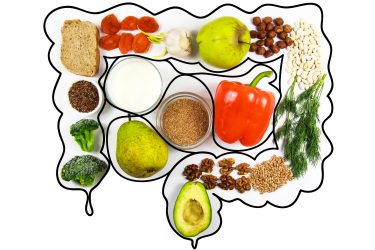The link between probiotics and a healthy microbiome
- Like
- Digg
- Del
- Tumblr
- VKontakte
- Buffer
- Love This
- Odnoklassniki
- Meneame
- Blogger
- Amazon
- Yahoo Mail
- Gmail
- AOL
- Newsvine
- HackerNews
- Evernote
- MySpace
- Mail.ru
- Viadeo
- Line
- Comments
- Yummly
- SMS
- Viber
- Telegram
- Subscribe
- Skype
- Facebook Messenger
- Kakao
- LiveJournal
- Yammer
- Edgar
- Fintel
- Mix
- Instapaper
- Copy Link
Posted: 6 September 2022 | Nathan Pratt | No comments yet
Clinical research on probiotics allows for new discoveries in relation to gut health and consumer-targeted products. Kerry’s Senior Nutrition Scientist, Nathan Pratt, explores.


Kerry’s study into the specific features of probiotics is allowing for new opportunities in nutrition
Probiotic is a popular term increasingly being used to describe food products and dietary supplements. But what exactly is a probiotic and how does it work?
What is a probiotic?
Probiotics are defined by the World Health Organization (WHO) as “live microorganisms which, when administered in adequate amounts, confer a health benefit on the host”. This definition is intentionally broad because it’s intended to cover the use of probiotics in different body sites and for different health conditions. Yet, in all applications, the term should only be used to describe the presence of living microorganisms that have been demonstrated to result in a health benefit. Those microorganisms should be defined at the strain level and contain known genome sequences.
Probiotics are living organisms that we introduce to our bodies’ living, dynamic microbiome environment through foods, beverages and supplements. The more we understand about how they interact with the gut environment, the microbes that already live there and the food we eat, the better the solutions will be for human health and food safety. In fact, at some point microbes could even be included in dietary recommendations, as fibre is now, i.e., we already recommend that people consume a certain daily amount of fibre simply because we fully understand its benefits. If probiotics are to gain similar broad public support, they must also be backed by science.


Probiotics are living organisms that we introduce into our bodies through foods, beverages and supplements
Therefore, the next phase of research and development is to take our understanding of probiotics, fermented foods and the microbiome to new heights. This means not just gaining a better understanding of the health benefits certain probiotics may have, but also specifically how they interact with the environment of our gastrointestinal (GI) tract.
This makes the most exciting area of microbiome research field right now— and a key area of focus — the study of the link between probiotics and the microbes that already reside in our GI tract, known as the resident microbiota, with the aim of establishing a comprehensive interaction model. Right now, we accept that certain probiotics, fibres, foods, beverages, etc., impact the microbiome in specific ways, but gaining a full understanding of what a healthy microbiome looks like is a challenging task.
Fortunately, the more we learn about one, the more we learn about the other, so in a few short years we will be much closer to gaining a clear picture of a truly healthy gut microbiome. Accumulating such knowledge about the molecular mechanisms of probiotic function will ultimately improve the selection process and guidelines for use – i.e., which people benefit from which probiotics and why. However, until then it’s a good idea to read the labels on your probiotic products to find out which species and strains are included.
Selecting the right probiotic for new products is crucial
When developing probiotic features for addition to foods and beverages, it’s vital to consider the science, strain characteristics and intended applications. This largely due to the varying abilities of microbes to withstand the manufacturing process. Strains such as Lactobacillus or Bifidobacterium, for example, can work well in refrigerated products but are unlikely to survive harsher processing conditions, such as high temperatures or acidity. Endospore-forming strains on the other hand – strains that remain dormant until ideal conditions are met (water activity, pH, temperature, etc.), similar to a plant seed – can endure a much wider range of temperatures and pH ranges due to their hardy spore coats.
Capitalising on ‘foods with a function’ and the role of probiotics
Scientific support and ease of use in applications
As part of its approach in probiotic nutrition and supplements, Kerry has developed an extensive range of branded, science-backed ingredients to help manufacturers create credible functional foods, beverages, and supplements.
This Kerry range includes products such as BC30™, a natural, spore-forming probiotic ingredient that supports digestion, immune health and protein absorption, and is backed by more than 25 published papers. BC30™ is available in either dry or wet formulations and can be used in heat-processed foods and beverages. Efficacy is also maintained due to the spore-forming nature of the probiotic; its natural outer shell protects the bacteria, allowing it to stand up to both intensive manufacturing processes (such as the extreme heat of baking) and the transit to the gut. Another probiotic in Kerry’s portfolio is Sporevia™, a GRAS, non-GMO and vegan-compliant spore-forming probiotic strain for use in supplements.
In addition to ingredients like BC30 and Sporevia, that are focused on the gut microbiome, Kerry’s ProActive Health portfolio also features yeast beta glucans for immune health; a range of omega-3s for heart, eye and brain health; ashwagandha for cognitive health; and a selection of other bioactive and botanical ingredients that serve a range of health need states.
Looking ahead: A bright future for probiotics and the microbiome
Intensive research efforts are underway to understand the specific features of many potential probiotics beneficial in achieving targeted health outcomes. What these solutions all have in common is their dedication and commitment to strong clinical data – in other words, credible science – which is essential in today’s wellness markets in which transparency is a must. Fortunately, probiotics are out in front, lighting the way to a brighter future for the microbiome.
About the author
Nathan Pratt, PhD, RD is a nutrition scientist passionate about finding ways to make science easily used and understood to improve health. His past research has focused on nutrition profiling systems and consumer behaviour. He has worked with the food and beverage industry for over eight years to help bridge the gap between consumer insights and nutrition science and better leverage nutrition in strategies and product development. In his role as Senior Nutrition Scientist at Kerry, he supports innovation, science communications, and is currently supporting the activation of the company’s sustainable nutrition strategy and targets internally and externally.
Related topics
Beverages, Health & Nutrition, Ingredients, Product Development









